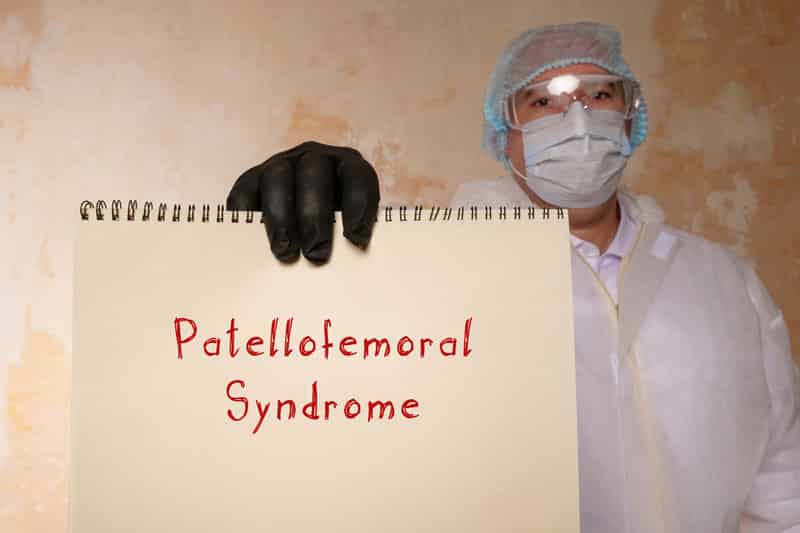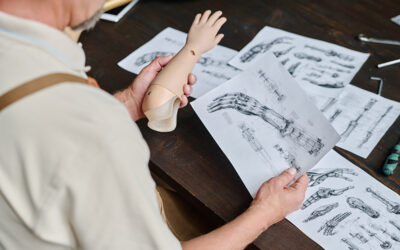Patellofemoral syndrome or runner’s knee is common, painful injury treated in the outpatient setting. PFS presents with pain in the front of the knee and around the patella, or kneecap. According to the American Academy of Family Physicians, PFS is the most common cause of knee pain in the population. The condition affects adolescents, young people, manual workers, and older adults, and is often seen in athletes. Orthopedists, physical medicine and rehabilitation (PM&R) physicians and sports medicine specialists are uniquely qualified to evaluate, diagnose and manage knee pain. There are various knee diagnosis and procedure codes and physicians can rely on orthopaedic medical billing and coding services to report the right codes and get paid for their services.
Causes and Symptoms of Patellofemoral Syndrome
Patellofemoral syndrome is the most common running injury seen by sports medicine specialists. Pain due to overloading, overuse and misuse of the patellofemoral joint usually results from vigorous athletics or training, previous dislocation or other knee trauma, and alignment issues with the kneecap, weak thigh muscles, tight Achilles tendons and hamstrings, and poor foot support can also cause the condition. The patellofemoral compartment has also been found to be at the highest risk of developing osteoarthritis after ACL injuries. This condition is called patellofemoral osteoarthritis.
Common symptoms include pain in and around the kneecap, pain, weakness or feelings of instability after sitting for a long time with the knees bent. The area of the kneecap can also become tender to the touch. Popping, crunching and clicking sounds when the knee is moved is another common symptom. Patellofemoral pain and stiffness usually make it difficult to climb stairs, do activities that require bending the knees, and other everyday activities that stress the joint.
Diagnosis
The area of the kneecap will be examined to check for tenderness, and evaluate the stability, alignment and strength of the knee and thigh muscles. The physical exam will also include a biomechanical assessment to check for muscle weakness at the hip. Blood tests and diagnostic imaging tests such as an x-ray or MRI may be ordered for exclusion of all other conditions that may cause anterior knee pain.
ICD-10 Codes
The ICD-10 code for Patellofemoral disorders is M22.2. Patellofemoral disorders, unspecified knee M22. 2X9 is a billable/specific ICD-10 code that can be used to indicate a diagnosis for reimbursement purposes.
- M22 – Disorder of patella
- M22.0 – Recurrent dislocation of patella
- M22.00 – Recurrent dislocation of patella, unspecified knee
- M22.01 – Recurrent dislocation of patella, right knee
- M22.02 – Recurrent dislocation of patella, left knee
- M22.1 – Recurrent subluxation of patella
- M22.10 – Recurrent subluxation of patella, unspecified knee
- M22.11 – Recurrent subluxation of patella, right knee
- M22.12 – Recurrent subluxation of patella, left knee
- M22.2 – Patellofemoral disorders
- M22.2X – Patellofemoral disorders
- M22.2X1 – Patellofemoral disorders, right knee
- M22.2X2 – Patellofemoral disorders, left knee
- M22.2X9 – Patellofemoral disorders, unspecified knee
- M22.3 – Other derangements of patella
- M22.3X – Other derangements of patella
- M22.3X1 – Other derangements of patella, right knee
- M22.3X2 – Other derangements of patella, left knee
- M22.3X9 – Other derangements of patella, unspecified knee
- M22.4 – Chondromalacia patellae
- M22.40 – Chondromalacia patellae, unspecified knee
- M22.41- Chondromalacia patellae, right knee
- M22.42 – Chondromalacia patellae, left knee
- M22.8 – Other disorders of patella
- M22.8X – Other disorders of patella
- M22.8X1 – Other disorders of patella, right knee
- M22.8X2 – Other disorders of patella, left knee
- M22.8X9 – Other disorders of patella, unspecified knee
- M22.9 – Unspecified disorder of patella
- M22.90 – Unspecified disorder of patella, unspecified knee
- M22.91 – Unspecified disorder of patella, right knee
- M22.92 – Unspecified disorder of patella, left knee
Treatment
Treatment depends on individual patient considerations such as age, overall health and history, extent of pain, potential for compliance with specific medicines, procedures, or therapies, expected duration of the condition, and opinions or preference.
Treatments for patellofemoral syndrome include:
- RICE: When used within 72 hours of injury, the Rest, Ice, Compression, Elevation (RICE) protocol is a very effective way to reduce pain and swelling in many cases.
- Medication: Over-the-counter anti-inflammatory medications (NSAIDs) can help ease the pain and swelling associated with this knee condition.
- Physical therapy (PT): A customized PT program can include strengthening exercises, coordination training, braces, patella taping, shoe inserts, and massage, and activity modification to minimize damage to the knee and prevent reinjury.
- Surgery: Surgical treatment for patellofemoral pain is rarely needed and is recommended only for severe cases that do not respond to conservative treatment. Surgery for patellofemoral pain include arthroscopic surgery and arthroplasty. Arthroscopic surgery is a minimally invasive procedure to remove damaged cartilage which can ease tension and improve mobility. Arthroplasty is a surgical procedure, in which the joints are replaced, resurfaced and realigned by using procedures like osteotomy or other procedures. Operations for patellofemoral injury are performed to realign the angle of the kneecap to allow it to track properly or ease pressure on the cartilage.
CPT Codes for Arthroscopy and Arthroplasty Knee Procedures
Knee Arthroscopy CPT codes
29850 – Arthroscopically aided treatment of intercondylar spine(s) and/or tuberosity fracture(s) of the knee, with or without manipulation; without internal or external fixation (includes arthroscopy)
29851 – Arthroscopically aided treatment of intercondylar spine(s) and/or tuberosity fracture(s) of the knee, with or without manipulation; with internal or external fixation (includes arthroscopy)
29855 – Arthroscopically aided treatment of tibial fracture, proximal (plateau); unicondylar, includes internal fixation, when performed (includes arthroscopy)
29856 – Arthroscopically aided treatment of tibial fracture, proximal (plateau); bicondylar, includes internal fixation, when performed (includes arthroscopy)
29866 – Arthroscopy, knee, surgical; osteochondral autograft(s) (e.g., mosaicplasty) (includes harvesting of the autograft[s])
29867 – Arthroscopy, knee, surgical; osteochondral allograft (e.g., mosaicplasty)
29868 – Arthroscopy, knee, surgical; meniscal transplantation (includes arthrotomy for meniscal insertion), medial or lateral
29870 – Arthroscopy, knee, diagnostic, with or without synovial biopsy (separate procedure)
29874 (Arthroscopy, knee, surgical; for removal of loose body or foreign body (e.g., osteochondritis dissecans fragmentation, chondral fragmentation)
29875 (Limited synovectomy, “separate procedure”)
29876 – Arthroscopy, knee, surgical; synovectomy, major, two or more compartments (e.g., medial or lateral)
29877 – Arthroscopy, knee, surgical; debridement/shaving of articular cartilage (chondroplasty)
29879 – Arthroscopy, knee, surgical; abrasion arthroplasty (includes chondroplasty where necessary) or multiple drilling or microfracture
29880 – Arthroscopy, knee, surgical; with meniscectomy (medial AND lateral, including any meniscal shaving)
29881 – Arthroscopy, knee, surgical; with meniscectomy (medial OR lateral, including any meniscal shaving)
29882 – Arthroscopy, knee, surgical; with meniscus repair (medial OR lateral)
29883 – Arthroscopy, knee, surgical; with meniscus repair (medial AND lateral)
29884 – Arthroscopy, knee, surgical; with lysis of adhesions, with or without manipulation (separate procedure)
29888 – Arthroscopically aided anterior cruciate ligament repair/augmentation or reconstruction
29889 – Arthroscopically aided posterior cruciate ligament repair/augmentation or reconstruction
HCPCS Level II code G0289 Arthroscopy, knee, surgical, for removal of loose body, foreign body, debridement/shaving of articular cartilage (chondroplasty)
Knee Arthroplasty CPT Codes
27438 Arthroplasty, patella; with prosthesis
27446 Arthroplasty, knee, condyle and plateau; medial OR lateral compartment
27447 Arthroplasty, knee, condyle and plateau; medial AND lateral compartments with or without patella resurfacing (total knee arthroplasty)
27486 Revision of total knee arthroplasty, with or without allograft; 1 component
27487 Revision of total knee arthroplasty, with or without allograft; femoral and entire tibial component
27488 Removal of prosthesis, including total knee prosthesis, methyl methacrylate with or without insertion of spacer, knee
Coding Guidance
The Centers for Medicare and Medicaid Services (CMS) provides the following guidance (https://www.cms.gov/files/document/chapter4cptcodes20000-29999final11.pdf) on the use of the Arthroscopic Knee Procedure CPT codes:
- CPT codes 29874 (Arthroscopy, knee, surgical; for removal of loose body or foreign body (e.g., osteochondritis dissecans fragmentation, chondral fragmentation) and 29877 (Arthroscopy, knee, surgical; for debridement/shaving of articular cartilage (chondroplasty)) should not be reported with other knee arthroscopy codes (29866-29889).
- Since CPT codes 29880 and 29881 include debridement/shaving of articular cartilage of any compartment, HCPCS code G0289 may be reported with CPT codes 29880 or 29881 only if reported for removal of a loose body or foreign body from a different compartment of the same knee.
- HCPCS code G0289 shall not be reported for removal of a loose body or foreign body or debridement/shaving of articular cartilage from the same compartment as another knee arthroscopic procedure.
- Arthroscopic synovectomy of the knee may be reported with CPT codes 29875 (Limited synovectomy, “separate procedure”) or 29876 (Major synovectomy of two or three compartments).
- CPT code 29875 shall not be reported with another arthroscopic knee procedure on the ipsilateral knee.
- CPT code 29876 may be reported for a medically reasonable and necessary synovectomy with another arthroscopic knee procedure on the ipsilateral knee if the synovectomy is performed in 2 compartments on which another arthroscopic procedure is not performed.
A 2020 AAPC article provides further guidance:
- If chondroplasty is the only procedure performed, 29877 is the appropriate code for all payers, including Medicare.
- Codes 29877 and G0289 should never be reported with meniscectomy codes 29880 or 29881 for the same knee because the chondroplasty is included in their definitions.
- For a non-Medicare patient, loose or foreign body removal should be reported using CPT 29874 with a primary service such as meniscectomy or meniscal repair (even from within the same compartment), with modifier 59 Distinct procedural service
- According to CPT, as long as pathologic synovial disease is present, 29876 can be reported with another arthroscopic knee procedure, even if it occurs in the same compartment – excluding procedures for removal of loose/foreign body or chondroplasty.
Although patellofemoral syndrome (PFS) is a common condition and knee arthroscopy is widely performed, reporting diagnosis and treatment can be complicated. Accurate coding is essential for proper payment for procedures performed. Distinguishing between diagnostic and therapeutic procedures, understanding the code definitions, and knowing Medicare and CPT guidelines is essential for correct billing. Complete and accurate documentation that supports diagnosis and the medical necessity of the problems addressed is also paramount. With accurate documentation, medical billing companies can ensure proper claims submission and ensure that providers get paid for services delivered.




